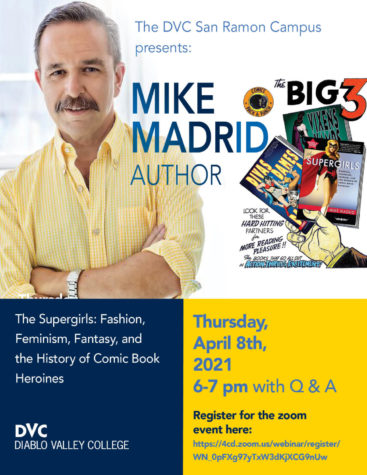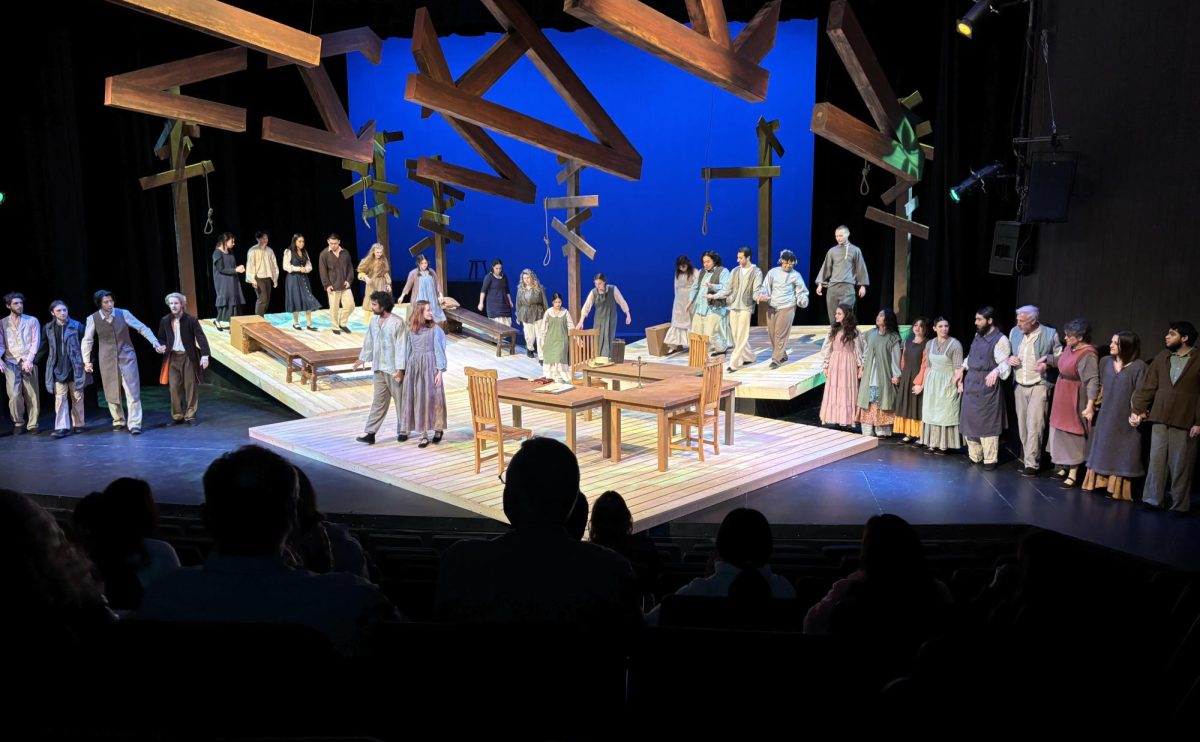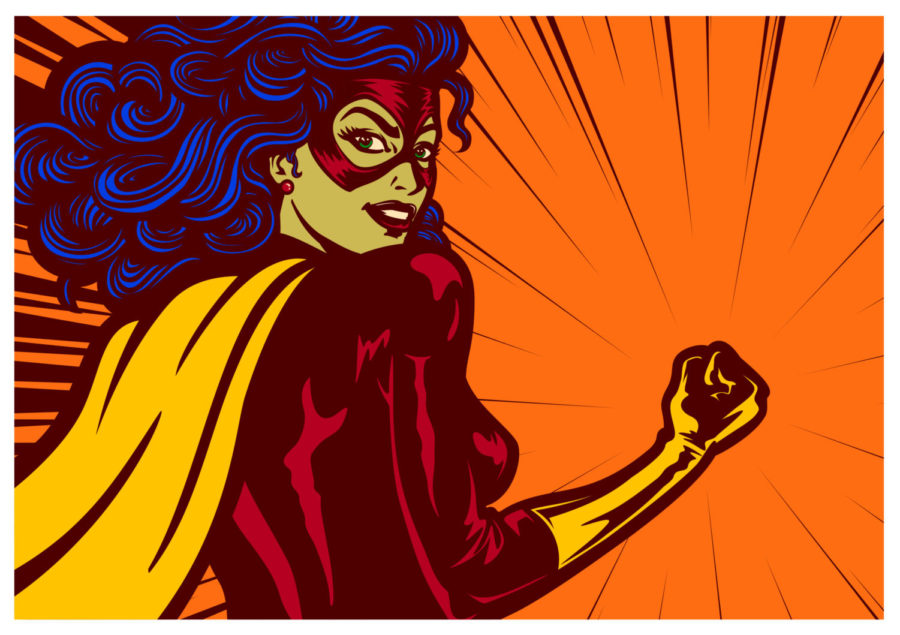Supergirls in Comics: Author Mike Madrid Discusses the Shifting Role of Female Superheroes in American Culture
April 21, 2021

When you read or hear the term “superhero,” who immediately comes to mind? Batman, Superman, Spiderman perhaps?
What about Sheena, Queen of the Jungle? Or Wonder Woman? Miss Marvel?
In an April 8 webinar hosted by the San Ramon Campus of Diablo Valley College, author Mike Madrid spoke about these and other female superheroes as he explored comic book heroines’ impact on feminism and other aspects of American culture.
“When some comic book fans hear the term ‘female superhero,’ there is an immediate bias,” Madrid, author of The Supergirls: Fashion, Feminism, Fantasy, and the History of Comic Book Heroines, told The Inquirer. “Because characters like Superman and Batman debuted first, there’s an implication that the ‘male’ superhero set the standard.”
Still today, he continued, “there is a resistance to accept the idea that these characters are as popular as male superheroes. And as long as that attitude persists, women will be considered ‘female superheroes’ as opposed to just ‘superheroes.’”
A San Francisco native and lifelong fan of comics, Madrid recalled that graphic books were always present when he was a child. He was an avid reader of Marvel comics in particular. Then, around the age of 12, Madrid took notice of a library section dedicated to the history of comics. He was especially interested in the female characters and what made them tick.
“They would talk about mainly how they looked, but they wouldn’t talk about their histories or adventures that they had,” he said.
As he got older, Madrid began to connect the pervasive, dismissive portrayal of women in comics to the oft-discounted notion that true female comic fans even existed. “There is a real sexism problem. [I’ve] talked to [a] number of women who are put off from reading comics because they are not comfortable in the comic book store environment, he said.
This stereotype can also be found at comic fan events and “cosplay,” or costume play gatherings, where female comic fans and cosplayers are sometimes accused of participating for attention.
A hyper-sexualized depiction of characters has long been prevalent in the comic book world, affecting both males and female characters, said Madrid. This is “always a reflection of what is happening in the larger society,” he noted, but things are changing. Now, “we have more women drawing comics” and more depictions of realistic body types.
Comics through the decades
The public’s view of comics as an entertainment medium strictly associated with kids and teens has shifted over time, according to Madrid. Early comic books, appearing in the mid-1930s, began as simple collections of newspaper comics. Once these proved commercially successful, published comic books featuring original characters began to appear. In the late 1930s, Sheena, Queen of the Jungle, became the first female superhero to appear in U.S. comics, setting a precedent for women superheroes who, like their male counterparts, would save the day.
From the beautiful jungle dwelling of Fantomah with her godlike superpowers, to patriotic heroes such as Miss Victory and Pat Patriot, the world of American comic books in the 1940s was rife with strong female crimefighters. During World War II, comic superheroes also began to speak against the threat to democracy, and the introduction of the Amazonian Wonder Woman provided a role model for girls to look up to.
A variety of feminine forces emerged, including female aviator heroes like Black Angel, the undercover Senorita Rio, and Pat Parker, the wartime nurse who led the first team of women heroes called the Girl Commandos.
But as soon as WWII ended and women left their munitions plants and military positions to return to domestic life, the American consensus was that females should step back into their traditional roles of wife and mother. A notable shift occurred as women characters in comics went from having adventurous roles to following more traditional, romantic storylines. The 1950s saw comic books drop in popularity and disappear from stands, said Madrid.
While there was a popular resurgence in male comic superheroes in the 1960s, women heroes were kept in the background of the action, often relegated to simply being the female member of a team. Comics even featured storylines in which female characters aspired to nothing more than receiving new clothing from their husbands and playing the role of housewife. Unlike the wartime era, 1960s comic books kept war politics out of their characters and plots, a trend that would endure for decades.
Feminism takes flight
Feminism began to appear in comics in the 1970s, Madrid explained, and the 1980s saw powerful female heroes such as Storm and the Phoenix of the X-Men series. In fact, the team of superpower mutants had a greater number of women members than men by the late 80s. Fans gravitated toward the series, as they identified with what Madrid called the characters’ “otherness.” Wonder Woman also made a comeback as an agent of peace in the 1980s.
So, who does Madrid believe is the greatest woman crimefighter in comics? “I don’t think there is one female superhero that represents them all,” he said.
“Certainly, Wonder Woman embodies many of the attributes that we associate with heroes––she’s powerful, fearless, selfless, and dedicated to fighting for truth and freedom. But the great thing about superheroes, both female and male, is that the reader can find one who they can personally relate to.”
The landscape of comic books and superhero characters continues to evolve, reflecting different American values than the ones that shaped their debut some eight decades ago. Contemporary heroes like the queer woman of color, America Chavez, is a prime example. “One of the good things about comics today is that we’re seeing a more diverse array of female heroes than we’ve had in the past. So, there are more opportunities for readers to find a character that represents their idea of what a hero should be,” Madrid said.
At their core, comics reflect back the changes occurring in society, and the evolution of female superheroes who reflect the strength of mortal females exemplifies this. “Female heroes are now presented as being more powerful than they had been in previous decades,” author Madrid said. “There is this real optimism at the heart of comic books.They really deal with universal themes that everyone can relate to.”







































































